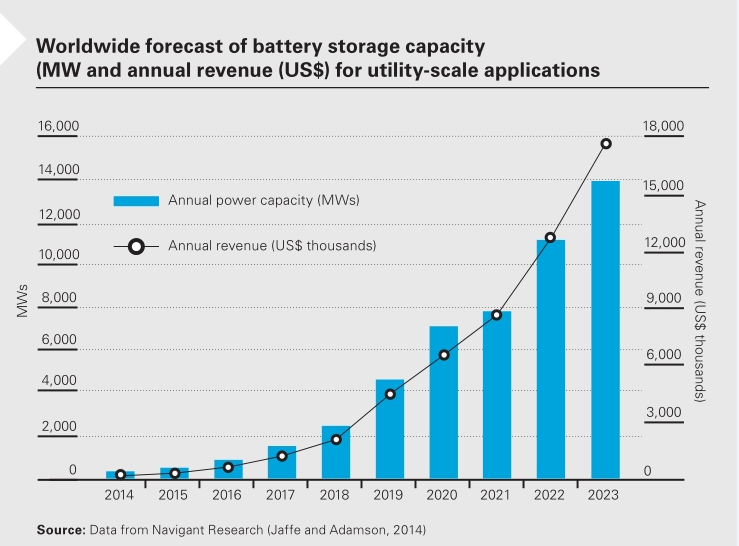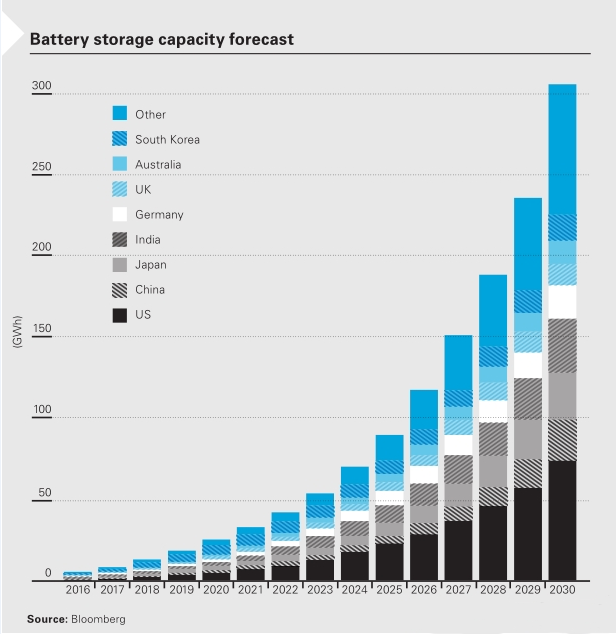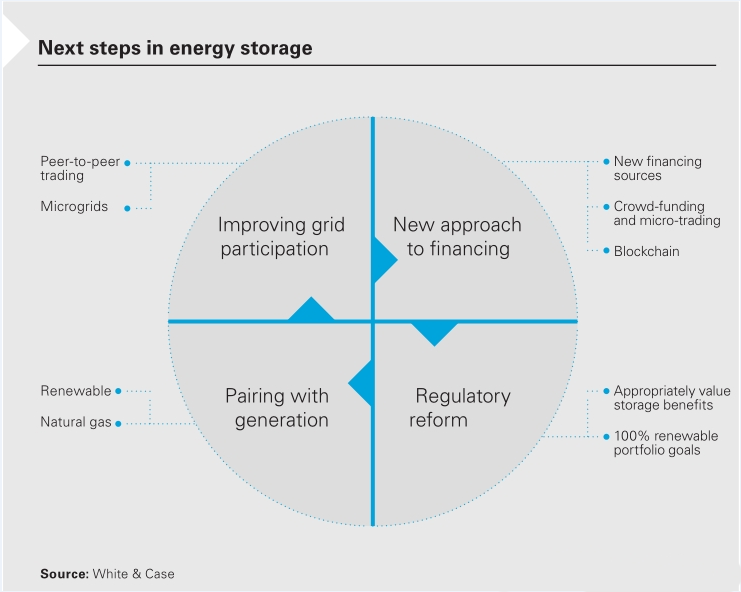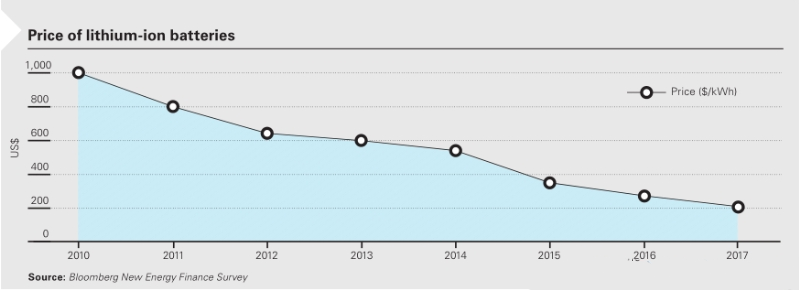The energy storage industry needs to target four development paths
Until now, battery storage has struggled to attract traditional project financing providers, mainly because it failed to achieve stable revenue.
Improve technology, lower prices, increase installed capacity
In addition to improvements in the field of battery energy storage, the development of the industrial sector has further promoted the downward trend in battery storage prices. In recent years, battery storage prices have dropped significantly. Part of the reason comes from the realization of economies of scale, especially in the field of electric vehicle manufacturers. Moody's currently predicts that by 2020, the cost of lithium-ion batteries will drop from about $10,000 per kilowatt in the early 1990s to about $100 per kilowatt.
Bloomberg expects that by 2021, the global installed capacity of batteries will reach 131GWh per year, while manufacturing capacity will increase to 400 GWh per year, and capacity will further increase by 1291 GWs by 2050. Some critics have speculated that India will become an important manufacturing center.

Development Opportunities
With the advancement of technology, battery energy storage will not only be an aid to power generation, but it can also be used as a power generation end, which indicates that a new era of battery energy storage will be opened. What is worrying, however, is that imposing a disruptive technology into traditional regulatory categories can hamper investment and create obstacles to further development and innovation by providing inappropriate or unhelpful economic signals.
Microgrid and consumer market
One of the core opportunities for battery energy storage is the microgrid. “Turders” target customers in the professional market – seeking more independent suppliers, and changes in peer-to-peer electricity trading around micro-generators will emerge.
The blockchain opened the micro-trade model, and the UK's first energy blockchain transaction took place between London residential areas in April 2018. By connecting the microgrid, the battery further increases its power supply level, smoothes the grid's electrical load, and exchanges a small fixed fee or charges per use charging mode.

System and technology need to match
Battery and battery energy storage are developing technologies, but their growth is currently driven mainly by demand for electric vehicles. If you want to improve the electricity market, you need to develop management methods for battery energy storage and corresponding financial subsidies. Battery storage needs to be seen not only as a backup power source or as a grid-assisted service, but also as a key player in managing a dynamic market and grid.
Energy storage next development goal
Based on the above points, energy storage needs to be further developed in the following areas:
1. Grid side, improve the participation of energy storage in the field of peer-to-peer transactions, micro-grid, etc.;
2. The power generation side will improve the application of energy storage in renewable energy and natural gas;
3. Institutional reforms require the establishment of subsidy mechanisms and the upgrading of renewable energy matching machines;
4. In terms of project financing, seek new financing channels, establish funds, and blockchain trading models.

For more about manufacturing Lead acid Battery products, please visit https://www.bullsbattery.com/














